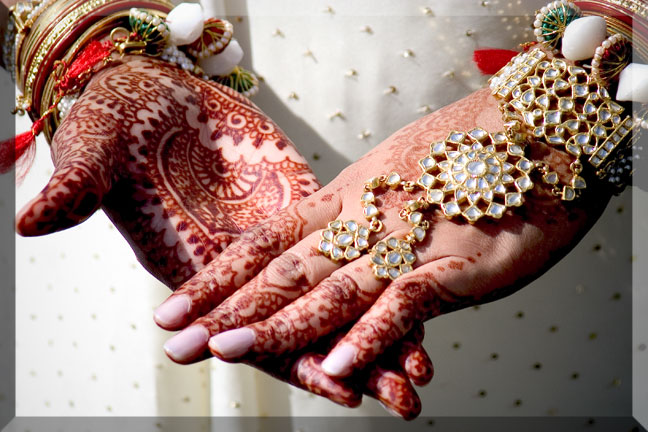Pre Wedding Maithil Brahmin Rituals
Here is provided information on pre wedding Maithil Brahmin rituals:
Siddhant Tradition
In the Siddhant tradition, the panjikar, as in the registrar, sees the panjis of both the families, before the commencement of wedding ceremony. As a part of this custom, the panjikar accepts the wedding of the prospective bride and groom, on the tar patra. The day for marriage is fixed according to the Maithil panchang (lunar calendar).
Arrival Of The Groom
On the wedding day, the ladies wait at the compound of the house to welcome the bridegroom, as he arrives. Beautifully decorated kalash and an ox yoke are also placed there. As the groom arrives, he is given a warm welcome by the women. Thereafter, the bride's assistant known as the vidkari, comes forward and welcomes him with sandal paste. This is followed by the groom's ceremonial bath after which he wears his dhoti and the jenui (sacred thread).
The bride then seeks the blessings of the washer man's wife, who is believed to always remain suhagin. It is said that washer man's wife never becomes widow, as she always dies before her husband. As a part of this custom, some yoghurt is taken and touched to the hair of the washerwoman. The same is given to the bride to eat.
Kul Devi Shrine
The couple is then led to the Kul Devi shrine. This is the only chance that the bridegroom gets to enter the shrine of the lineage goddess of the bride's father.
Gauri Puja
Gauri puja is performed, in which the bride offers prayers to Goddess Gauri and thanks her for giving her such a wonderful husband. Betel nut placed on the head of a clay elephant represents the goddess.
Otangar Custom
In the Otangar custom, eight Brahmin men crush some rice, which symbolizes that marriage is the combining of "seed" or bloodlines connecting patrilineages in new ways. The bridegroom also participates in this ritual.
Nana Yogin Ceremony
Nana yogin also called grandmother yogi is a custom that is performed by ladies. As a part of this custom, things like flower, betel leaves etc are placed on a tray, which are used for doing the traditional Aarti of the bridegroom. While doing Aarti, the women chant these words, "Take your yoga and give us wealth."






